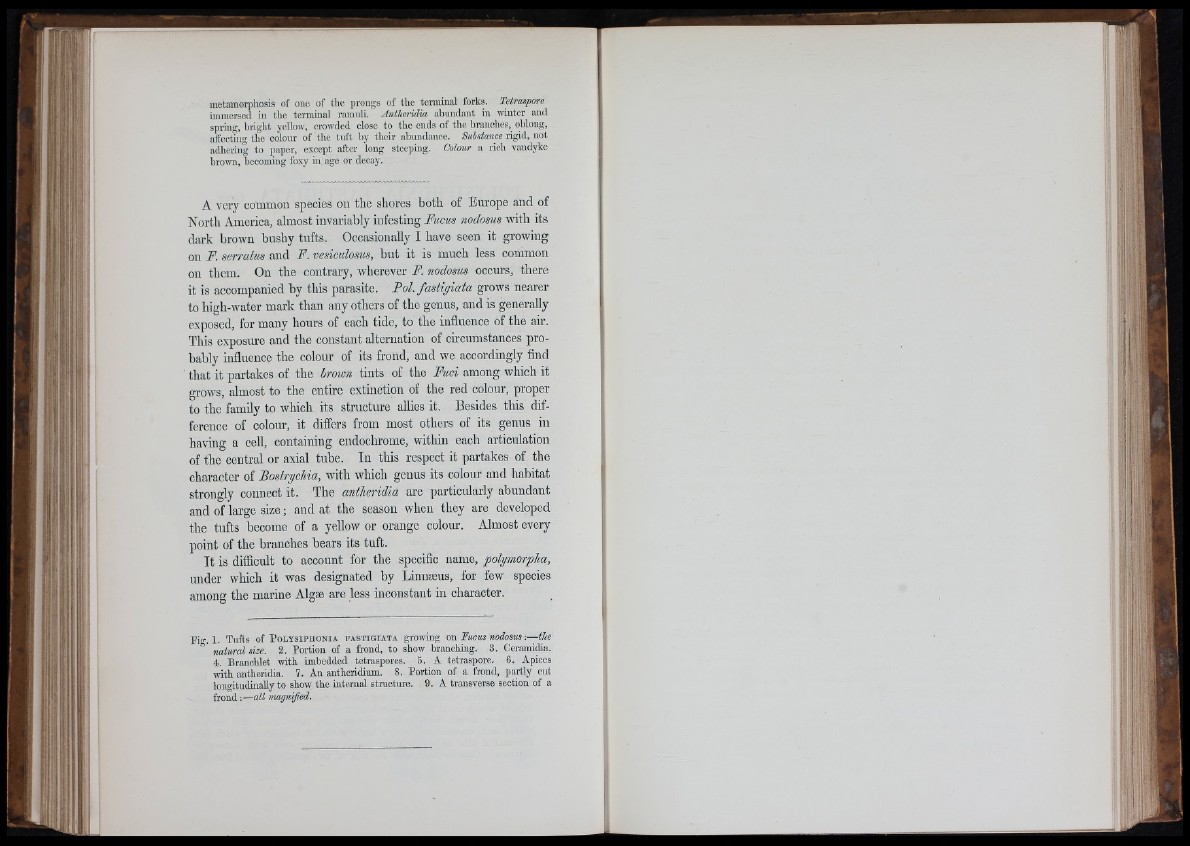
\ k
•I
I [: ;
t
I
I
¡1 !?
1
i l i
metamorphosis of one of tlie prongs of the tenninal forks. Tetraspore
immersed in the tenninal ranuili, Antheridia abundant in winter and
spring, bright yellow, crowded close to the ends of the branches, oblong,
atfeetmg the colour of the tnft by their abundance. Substance rigid, not
adhering to paper, except after long steeping. Colour a rich Vandyke
brown, becoming foxy in age or decay.
A very coiniuon species on the shores both of Europe and of
North America, almost invariably infesting Facus nodosus with its
dark brown bushy tufts. Occasionally I have seen it growing
on F. serratus and F. vesiculosus, but it is much less common
on them. On the contrary, wherever F. nodosus occurs, there
it is accompanied by this parasite. Pol. fastigiata grows nearer
to high-water mark than any others of the genus, and is generally
exposed, for many hours of each tide, to the influence of the air.
This exposure and the constant alternation of circumstances probably
influence the colour of its frond, and we accordingly find
that it partakes of the hrown tints of the Fuci among which it
grows, almost to the entire extinction of the red colour, proper
to the family to which its structure allies it. Besides this difference
of colour, it differs from most others of its genus in
having a cell, containing endochrome, within each articulation
of the central or axial tube. In this respect it partakes of the
character of PostrycUa, with which genus its colour and habitat
strongly connect it. The antheridia are particularly abundant
and of large size; and at the season when they are developed
the tufts become of a yellow or orange colour. Almost every
point of the branches bears its tuft.
It is difficult to account for tbe specific name, polymorpha,
under which it was designated by Linnaeus, for few species
among tbe marine Algae are less inconstant in character.
O'. 1 . Tufts of P o l y s i p h o n i a f a s t i g i a t a growing on Eucus nodosus -.— the
natural size. 2. Portion of a frond, to show branching. 3. Ceramidia.
4. Branchlet with imbedded tetraspores. 5. A tetraspore. 6. Apices
ivith antheridia. 7. An antheridium. 8. Portion of a frond, partly cut
longitudinally to show the internal structure. 9. A transverse section of a
frond:—all magnified.